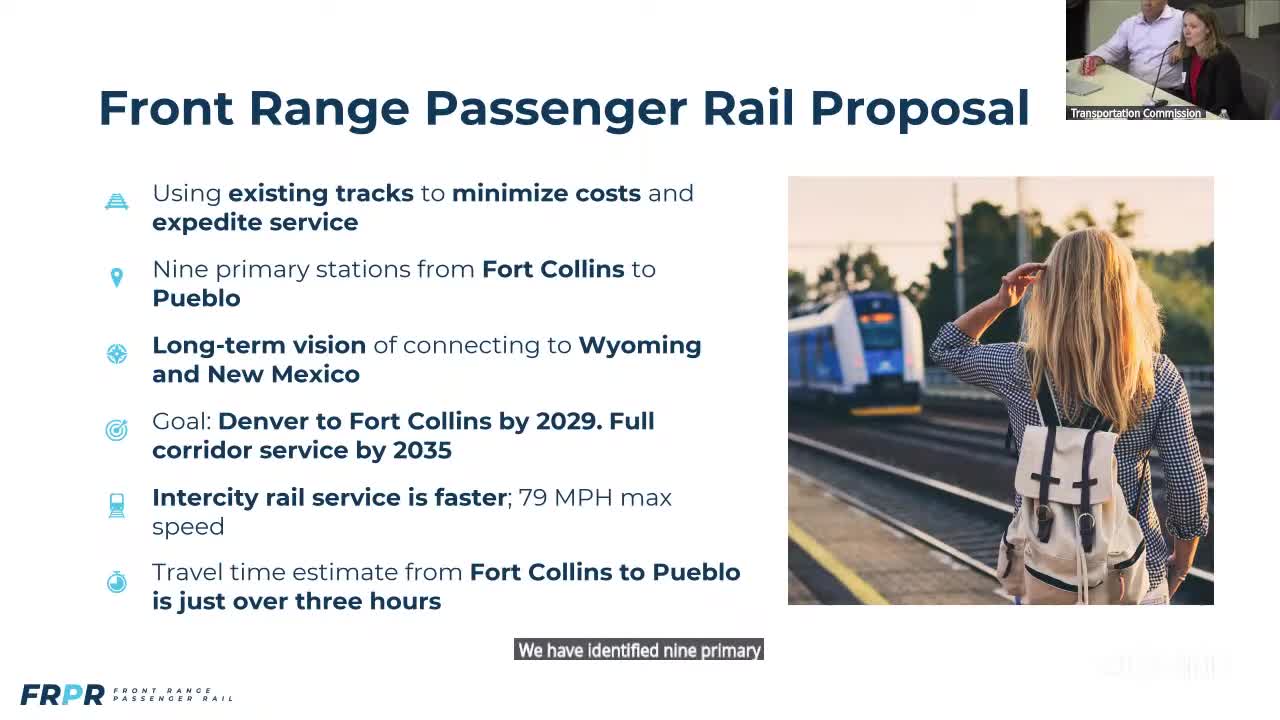Colorado moves to establish new passenger rail service from Fort Collins to Pueblo by 2035
May 14, 2025 | Transportation Commission, Governor's Boards and Commissions, Organizations, Executive, Colorado
Thanks to Scribe from Workplace AI , all articles about Colorado are free for you to enjoy throughout 2025!

This article was created by AI using a video recording of the meeting. It summarizes the key points discussed, but for full details and context, please refer to the video of the full meeting. Link to Full Meeting
Currently, Colorado lacks a dedicated inner-city passenger rail service, which is distinct from the existing commuter rail lines operated by the Regional Transportation District (RTD). The proposed rail service aims to operate at a maximum speed of 79 miles per hour, making travel time from Fort Collins to Pueblo competitive with automobile travel, estimated at just over three hours.
A significant milestone was celebrated during the meeting, as the team acknowledged the successful demonstration train ride that took place last year, which ran from Denver Union Station to Downtown Longmont. This event marked a revival of passenger rail service on these lines, which had not been continuously operated since the 1960s. The demonstration garnered public enthusiasm, with community members cheering as the train passed, indicating strong local support for the initiative.
The workshop also emphasized the collaborative efforts between CDOT and various stakeholders, including the governor's office and Amtrak, to develop a comprehensive service plan. This plan includes a feasibility study that will be presented to the Federal Railroad Administration, showcasing the viability of the proposed rail service. Currently, public engagement efforts are underway to gather community feedback on the technical work completed thus far.
As Colorado continues to grow, the development of this passenger rail service is seen as a crucial step towards improving transportation options and enhancing connectivity within the state. The next phases of planning and public engagement will be vital in moving this project forward, ensuring it meets the needs of the communities it aims to serve.
Converted from Transportation Commission Workshops 051425 meeting on May 14, 2025
Link to Full Meeting
Comments
View full meeting
This article is based on a recent meeting—watch the full video and explore the complete transcript for deeper insights into the discussion.
View full meeting
